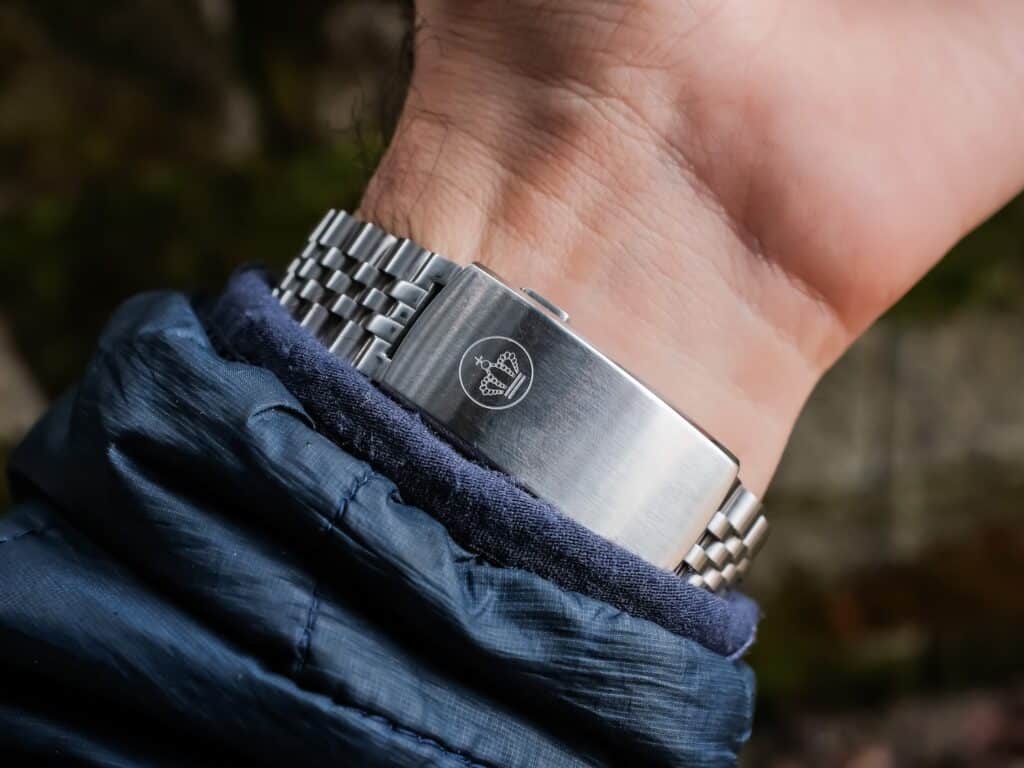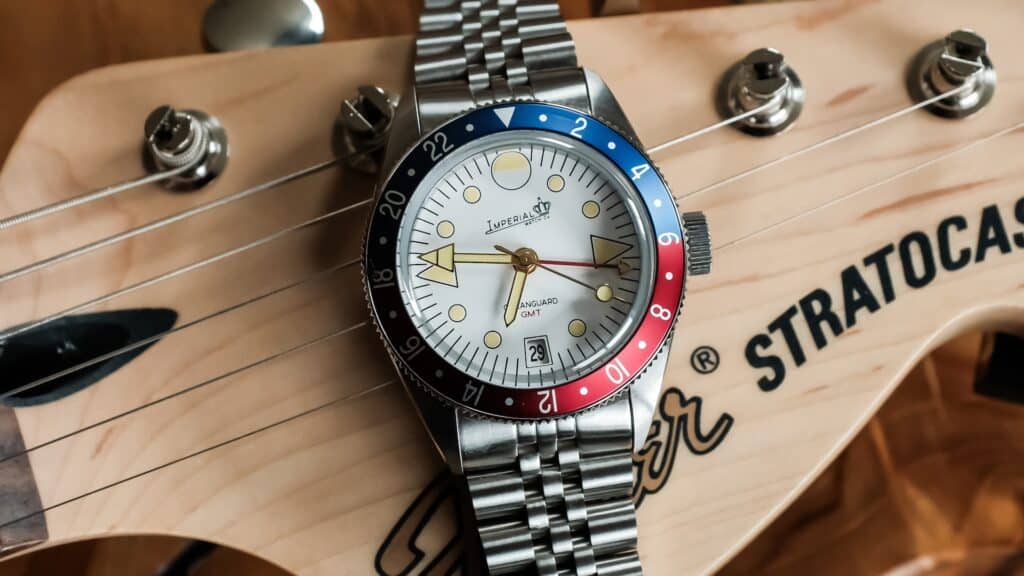Now that we’re through the craze of Watches & Wonders 2024, I’ve gotta say that getting my thoughts down on the new Imperial Oceanguard GMT has been a real treat. Last year, I had a chance to review the brand’s first release—the Royalguard 200—and I’ve been eager to see what the brand would follow things up with. After a bit of teasing on social media, the Imperial Oceanguard GMT was revealed this year in a run of four different colorways, each limited to 25 pieces. The one you see here is the model in “Jet Wash White”, and it’s one of the few remaining versions that haven’t sold out. As a GMT lover, this one was a ton of fun to handle and I think it’s a great buy at under $600.

I was thrilled when I unboxed the watch and saw I had gotten this colorway to review. It’s got that elusive color combo we’ve seen on the mysterious 6542 “Albino” GMT Master, and I’ve been intrigued by this design over the past year. It’s actually one of the more conventional colorways that Imperial offers in this run alongside a traditional black dial/Pepsi version. The other ones are cool but a little too wild for me to wear daily. Overall, this is a logical evolution for Imperial Watch Co. to follow after the Royalguard’s successful limited run.

Case
Imperial went with a seriously classic case size on this, and I was actually surprised to see how well it wore on the wrist once I pulled it out. Over the past few months, I’ve been drooling over watches like the original Black Bay GMT with the opaline dial and the Monta Skyquest with a similar colorway. This watch, however, is a little more vintage-focused than the other two and, as a result, is way more comfortable. The case itself is all stainless steel with utilitarian finishing that isn’t too flashy. The dimensions are 38mm in diameter, 14mm thick, 47mm lug to lug, and with a lug width of 20mm. That’s about as good as it gets if you’re into the more vintage stuff, and I feel as if the watch wore a lot like the Seiko 5 GMT I reviewed back in 2022.


Water resistance is 200m, and the watch has a screw-down crown similar to what we got with the Royalguard 200. I’d say that overall, the watch has that familiar skin diver silhouette, which is actually quite cool when you pair it with such a classic aviation-inspired color scheme. Some might argue that the thickness is a bit high, but this didn’t really bother me. Also, you might notice that the crown is enormous. It’s 7.5mm, to be exact, and I think it proportionally ties in the entire design quite well. It’s quite grippy, easy to manipulate, and matches the overall design correctly. The same goes for the bi-colored bezel, which allows you to track that second time zone in a 24-hour format.


Bracelet
The Imperial Oceanguard GMT comes with a well-built and solid jubilee-style bracelet. It tapers down from 20mm at the lugs to 16mm at the clasp. Personally, I love this style of bracelet on a vintage-looking GMT watch. I found that it articulated well and wore comfortably throughout the day. The links were all solid, and I honestly had no complaints about the bracelet overall. If anything, I’d say that the clasp was slightly thick, but I appreciated the tool-less microadjust functionality. Honestly, the setup was really bare bones, but on a watch like this, I wouldn’t have it any other way.

Dial
Here is where we have quite a bit going on. Like the Royalguard 200, it seems like Imperial took a page out of the Eberhard & Co. Scafograf 300 playbook when putting together the dial and handset design. But this time, we have a 4-hand configuration with the big dots & triangles layout, a date at 6 o’clock, and the circular index at 12 o’clock. At first, that last design point appeared awkward, but in person, I found that it aided in legibility and didn’t look too out of place. In this specific example, I found that the vintage tone they used on the lume plots throughout the dial fit the white backdrop quite well. It wasn’t obnoxious and I think this is the most positive aspect of the “Jet Wash White” dial.

Movement
Together with the highly legible dial design, the Seiko NH34 movement provides an easy and affordable way to track a second time zone. In my time with the Imperial Oceanguard GMT, I spent less time worrying about “caller” vs. “flyer” GMT functionality and simply manipulated the bezel to get my second time zone. After all, this is how many of our favorite vintage GMT watches worked for ages. But, if you wanted to know, the 24-hour GMT hand is the one that “jumps” with this movement. I had no issues with accuracy or a lagging movement in this case, even though I didn’t really set this one on a time graph. It just goes to show that this relatively new movement from Seiko is killing it and I hope that brands keep using it for years to come.

Final Thoughts
Ultimately, I think this is a fine follow-up to the impressive launch of the Imperial Watch Co. brand. The Royalguard 200 was just such a fun entry into the world of affordable micros when it cam out. I’m glad we now have a similar option in the affordable GMT space. In the future, I hope that we get a run that isn’t so extremely limited, as I feel that people will probably buy into these steadily without issue. Currently, this “Jet Wash White” model is the only one left available for ordering. So, if it’s your cup of tea, visit the brand’s site and snag one while you can. Hopefully, this isn’t the end of Imperial’s GMT offerings. The brand has proven that they can utilize some wild color options and I hope this isn’t the last of what we see.

Co-Founder & Senior Editor
Michael Peñate is an American writer, photographer, and podcaster based in Seattle, Washington. His work typically focuses on the passage of time and the tools we use to connect with that very journey. From aviation to music and travel, his interests span a multitude of disciplines that often intersect with the world of watches – and the obsessive culture behind collecting them.
